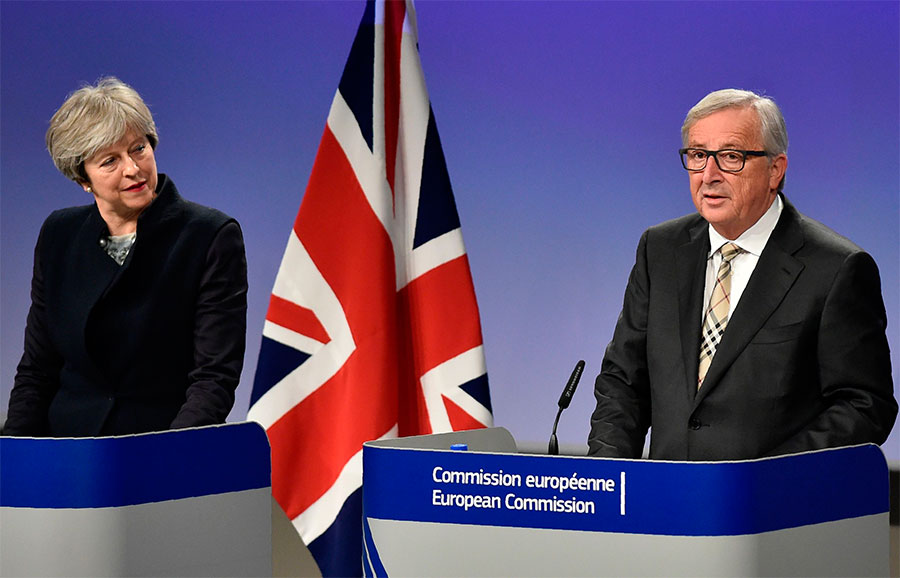ASIA’S ACQUITTAL WELCOMED IN UK
- 10 Nov - 16 Nov, 2018

Finally, finally, the wheel has begun to turn with the news, not yet entirely confirmed, that Mrs May’s government has agreed to pay the European Union a sum somewhere between £40 and £50 billion in terms of the so-called ‘divorce’ settlement with the EU.
At a lunch with the EU President Jean-Claude Juncker, which would have been eaten and well digested by the time this sees the light of day, Mrs May will be told whether or not her offer on the divorce bill, as well as whatever plans she has on guaranteeing that the rights of EU citizens in the UK are not adversely affected plus her plans of an open border between Northern Ireland and the Irish Republic, are acceptable and that the talks can now move to the second phase, the phase in which the UK is really interested, which will spell out the terms of the UK’s future trade relationship with the EU. It cannot be a lunch to which Mrs May could possibly be looking forward, given that the right wingers in her party have put terms and conditions that are unlikely to make Mr Juncker click his heels and dance with joy. They do not want the European Court of Justice to have anything to do with issues affecting EU citizens after March 30, 2019 when the UK leaves the EU; and they want it made clear to the EU that the offer of £40-£50 billion is conditional on getting a free trade deal with the EU. Neither of these points is likely to go down well, irrespective of what is on the menu for the lunch and the second one almost certainly not so as the EU has said repeatedly that there can be no free trade without free movement of people. That the UK cannot have as the entire Brexit saga was with the purpose of keeping out East Europeans supposedly taking over British jobs, places in British schools and British hospital beds.
Quite apart from that, the question of a Northern Ireland border is as insoluble as it ever was. The Tory government’s quest to come up with an idea that gives a border that is both closed and open at the same time has, quite understandably, come up with nothing. And the EU has made it clear that unless the Republic of Ireland, which is a member of the EU and adamant that the border should be open, is happy with whatever the British government puts on the table, there is no deal. And if the Europeans give the thumbs down after Mrs May’s lunch, a hard Brexit stares us all in the face.
It is perhaps this grave prospect, coupled with the equally grave prospect of shelling out something close to £50 billion that has started another, much more meaningful wheel in motion. A survey which has hit the headlines as I write this reveals that almost half of Britons want a public vote – another way of saying second referendum – on the government’s final deal with the EU once the government has completed its negotiations with the EU. Of the 1,003 people surveyed, 497, which is almost 50 per cent, said they would “support holding a referendum asking the public if they will accept or reject the deal”. A total of 343, or 34 per cent, said they were against the idea of a public vote, while 164 (16 per cent) said they did not know.
The interesting thing here is that of the 497 people who said they wanted a second referendum, 271 or 54.5 per cent had voted Remain in the referendum of June 2016 while as many as 149 or 29 per cent had voted Leave and 15 per cent who wanted a second referendum had not voted in the first one, showing that this could be one of the main reasons why the result went the other way and why Leave voters are now so vocal about not having a second referendum. Equally surprising is the fact that of the 343 who voted against a second referendum, 78 or 23 per cent had voted Remain in the first referendum of June 2016, while 224 or 65 per cent were original Leave voters and 35 or 10 per cent had not voted in June 2016. The poll was conducted for The Mail On Sunday, one of the most staunch pro-Brexit publications.
Of course, this is only a small sample, but its results are nevertheless extremely important as it marks the first time that any pollster had reported a backing – and a clear one at that – for a second referendum. It is almost certain that other polling organisations are going to be holding similar polls, perhaps sooner rather than later.
No less instructive is the fact that the same polling organisation has also found that Labour now leads the Tories by a clear eight points, 45 to 37, the largest gap in the last five months since the beginning of the summer. It was this group who was the only one to predict the surprise results of the last British General Elections which saw the Tories lose their majority in the House of Commons. If the same pattern was to be reflected throughout, Labour would have a majority in Commons. And that is certain to turn even the best lunch to dust in Tory mouths! •
COMMENTS